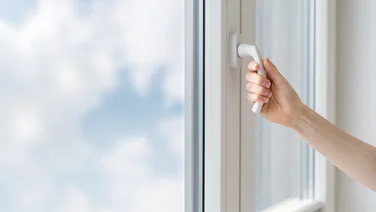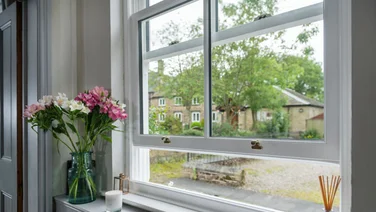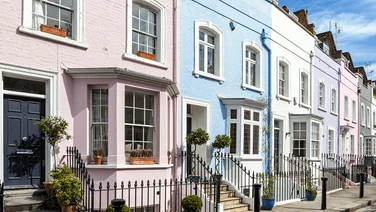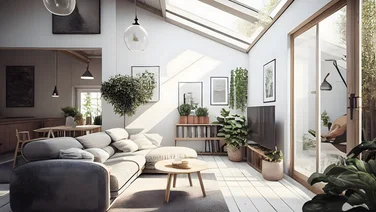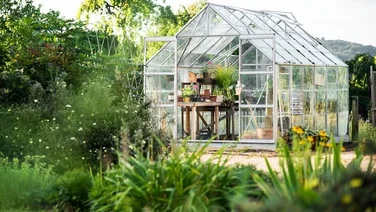- You’ll need approval from your local council’s building control department
- Secondary glazing is just as effective but cheaper and easier to fit
- DIY alternatives like window film can work well for those on a tighter budget

When it comes to improving your home, adding double glazing is an easy decision for energy efficiency gains. Installing it yourself can seem like an enticing prospect to save some cash – but is it really a good idea?
Whether you’re a seasoned amateur enthusiast or a novice exploring your options, this article will help you take a closer look at the DIY route before you bust out the tool belt.
To keep your options open, we can also help you compare the best professional double glazing prices. Just pop a few details about your home in our easy-to-use quote tool. We’ll pass on your details to our trusted suppliers, who’ll get in touch with you with free quotes for you to compare.
Is it possible to install double glazing yourself?
Installing double glazing yourself is technically possible, but there’s a catch.
According to building regulations, even if you have above-average DIY skills, your handiwork won’t be recognised as being performed by a ‘competent person’ (yes, we know – how dare they).
This means you’d have to apply for approval from your local council’s building control department before you get started. The council team will then check and sign off on your completed work to make sure it meets the required standards.
You can avoid all this hassle by using a FENSA-registered installer, as they can ‘self-certify’ their work. A registered professional will also bring their expertise, compliance assurance and an insurance-backed guarantee for your investment.
So, while it’s doable, weigh up the pros and cons first.
If you’re interested in double-glazing grants for over-60s, have a look at our guide. Also, if you want to know how much new windows might set you back, look at our double glazing cost calculator.
How much does secondary glazing cost? Find out with our dedicated guide.
How to install double glazing on your own
For laypeople and hobbyists alike, DIY-ing is both exciting and intimidating, especially when you’re installing double glazing.
As the process can be complex and time-consuming, we’d always recommend considering professional help for the safest and most efficient choice. But if you’re still up for the challenge, here are seven steps to guide you:
1. Get approval
First, contact your local authority’s building control department to inform them about your plans. Apply for approval and follow the procedures they provide.
You might find it a little tricker to get approval if you live in a listed building or a conservation area – find out more about this on our page Can You Install Double Glazing On A Listed Building?
2. Measure accurately
Take exact measurements of your window frames where you’ll be installing the double glazing. Precision is key, as unreliable measurements will lead to poor fitting.
3. Order your materials
Once you know the specs for the exact sizes and the type of fittings you need, shop around for the best deal for your requirements.
4. Prepare for installation
Once the new windows arrive, remove the old windows. Clean the area thoroughly and ensure it’s ready for the new windows.
5. Fit your new windows
Place the new window into the frame. Check the window is level and make any adjustments needed. Then, secure it in place.
6. Seal and finish
Apply a suitable sealant around the edge of the window to ensure it’s watertight and draught-proof. After, check if the windows open and close correctly.
7. Get building control sign-off
As soon as you’re done, contact your local building control department to come and inspect the installation. If it meets the required standards, they’ll certify your handiwork and you’re good to go.
Remember that each window and house can present its own unique set of challenges. If you’re not confident in your ability to perform these steps, hiring a FENSA-registered installer is the safest option.
If you’re looking for installers near you, have a look at our page that looks into the best double glazing companies.
Is DIY double glazing worth it?
The most obvious advantage of DIY double glazing is the potential savings on your overall double glazing costs.
Professional installation is likely to cost you a pretty penny and make up a big part of your project expenses. Although the cost will depend on the double glazing company you go with, average labour and scaffolding costs could set you back around £500 per day, plus any finishing costs for internal plastering.
What’s the best way to deal with condensation inside double glazing? Read our dedicated guide to find out.
Doing it yourself could potentially save you hundreds to thousands of pounds, depending on the size and complexity of the job. However, this saving doesn’t come without its risks:
- Quality: Professional installers usually have the skills and experience to guarantee a flawless double glazed window installation. DIY mistakes can lead to draughty, leaky, or dysfunctional windows, which will be full of condensation.
- Time and effort: Installing double glazing is a time-consuming and physically demanding task. You’ll need to commit significant time and energy to get it done.
- Building regulations: As you’re not a ‘competent person’ in the eyes of the law, you’ll need to get legal approval for your work, which could be a lengthy process.
- Warranty issues: DIY installation is likely to void the warranty on your windows, which would be a significant disadvantage if issues arise later on.
- Resale value: If you plan to sell your house in the future, poor DIY installation could affect your property’s resale value and might put potential buyers off.
While DIY double glazing could be a cost-effective option if you’re confident in your skills, consider the potential risks and the time investment required.
It’s well worth getting a few professional quotes for comparison before you decide. Why not get a free estimate of how much it would cost to buy and install new double glazed windows in your home using our double glazing cost calculator?
Alternatively, you could look into draught proofing your windows to cut back on costs.

DIY alternatives to double glazing
Double glazing can be a significant investment for insulating your home, but opting for a DIY alternative to double glazing can be a cost-effective and satisfying project, especially if you’re on a tighter budget.
While not always as efficient as professional double glazing, these ingenious methods can still boost your home’s insulation and save you cash.
Secondary glazing
Secondary glazing offers several of the same benefits, including improved insulation, noise reduction, and increased security. It involves adding a second layer of glass or acrylic to your windows instead of replacing them, which is a lot cheaper.
DIY installation is pretty straightforward: measure your window, order a secondary glazing kit, and then fix the secondary pane inside your existing window frame using the provided attachments.
It’s a practical solution to enjoy the perks of double glazing without the hassle and expense of complete window replacement, especially for older homes with single-glazed windows.
Window film insulation
Window film insulation is a cost-effective solution to reduce heat loss, improve your comfort, and lower energy bills. These transparent films reflect heat back into the room and block drafts, increasing the thermal efficiency of your windows.
To apply, clean your window thoroughly, cut the film to fit your window, attach it using double-sided tape (usually included in the kit), and then use a hairdryer to shrink and smooth out the film.
It’s an easy and affordable DIY project, making it a popular choice for those looking to increase their home’s insulation without breaking the bank.
Bubble wrap
Bubble wrap is a surprisingly effective, low-cost DIY solution for window insulation. Its air pockets can help reduce heat loss and effectively insulate windows during the winter.
Its installation is quite simple: just cut the bubble wrap to the size of your window, spray a light mist of water on the window to make it slightly damp, and stick the bubble side of the bubble wrap onto the glass.
While it may not be as aesthetically pleasing or long-lasting as double glazing, it’s a nifty trick that can make a noticeable difference, especially for those on a tight budget or in temporary housing situations.
Next steps
We’ve unpacked the world of DIY double glazing just for you, helping you weigh up if it’s worth the effort.
If the DIY route seems a bit much, no worries – we’re here to help. Simply pop a few details about your home in our easy-to-use quote tool. We’ll pass on your details to our trusted suppliers, who’ll get in touch with you with free quotes for you to compare.
FAQs
Can you do double glazing yourself?
You can install double glazing yourself. However, it requires precision and technical skill – and comes with its own red tape.
As a non-registered installer, you’ll need approval from your local building control department, which will need to inspect and certify your work. It’s worth considering if all the fuss outweighs the benefits.
How to double glaze cheaply?
For cheap double glazing, consider DIY installation with a secondary glazing kit or insulating window film. These options offer many benefits of double glazing without the cost.
For a temporary fix, try bubble wrap for insulation – it’s inexpensive and remarkably effective.
Can I double glaze my existing windows?
You can double glaze your existing windows using secondary glazing. This involves adding a second pane of glass or clear acrylic inside your existing windows.
It’s a cost-effective method that enhances insulation and reduces noise without the hassle of replacing the entire window.


